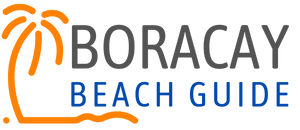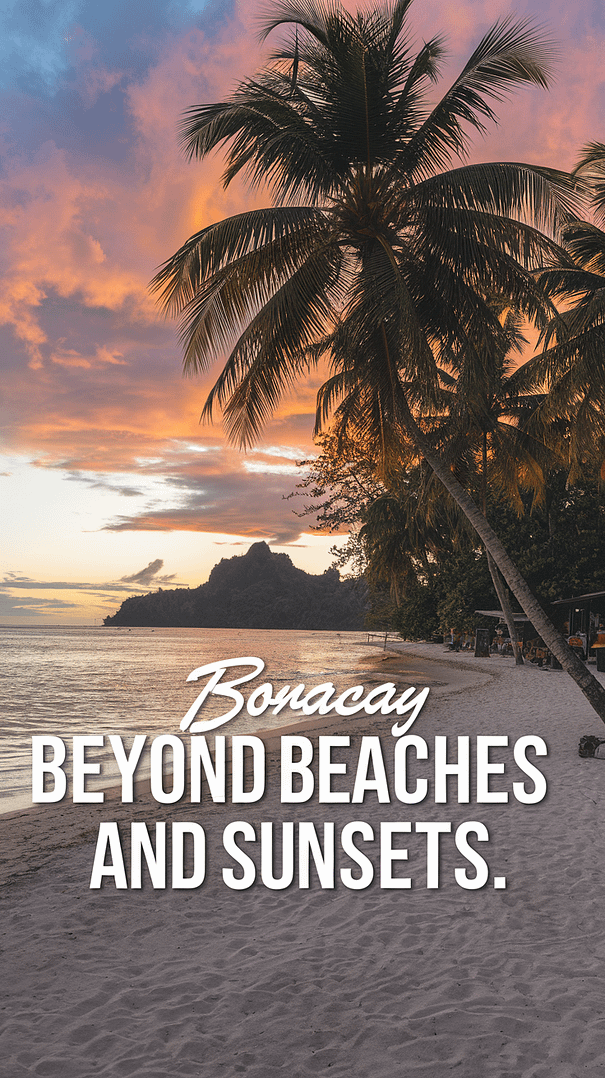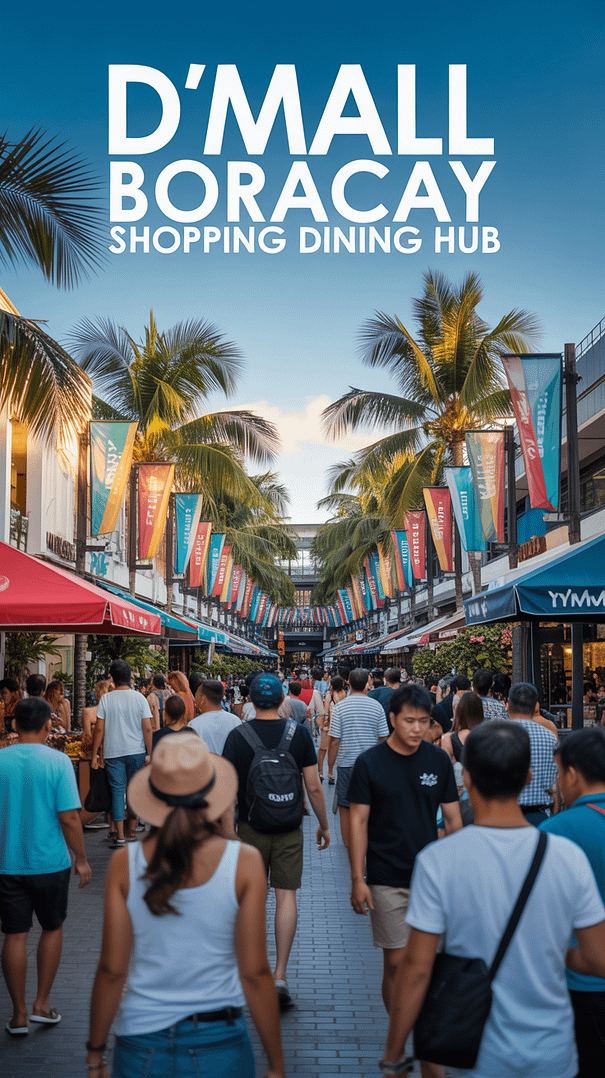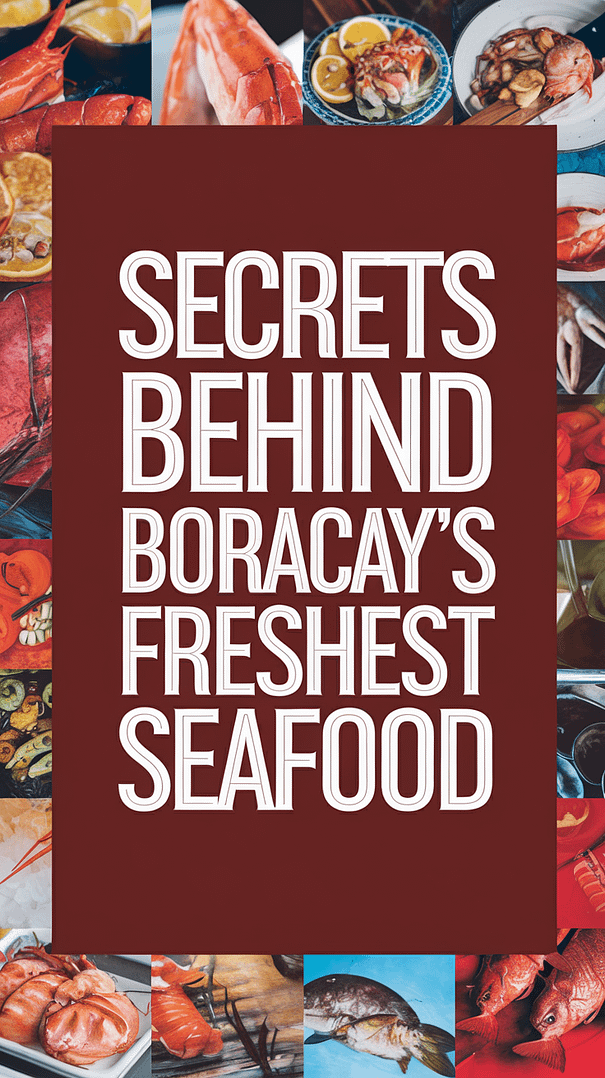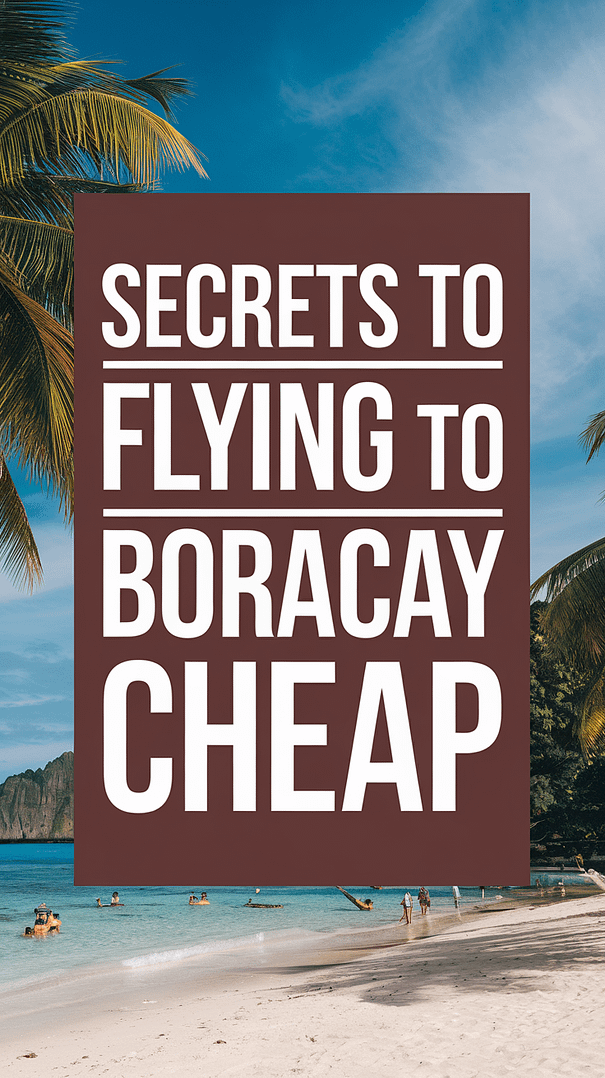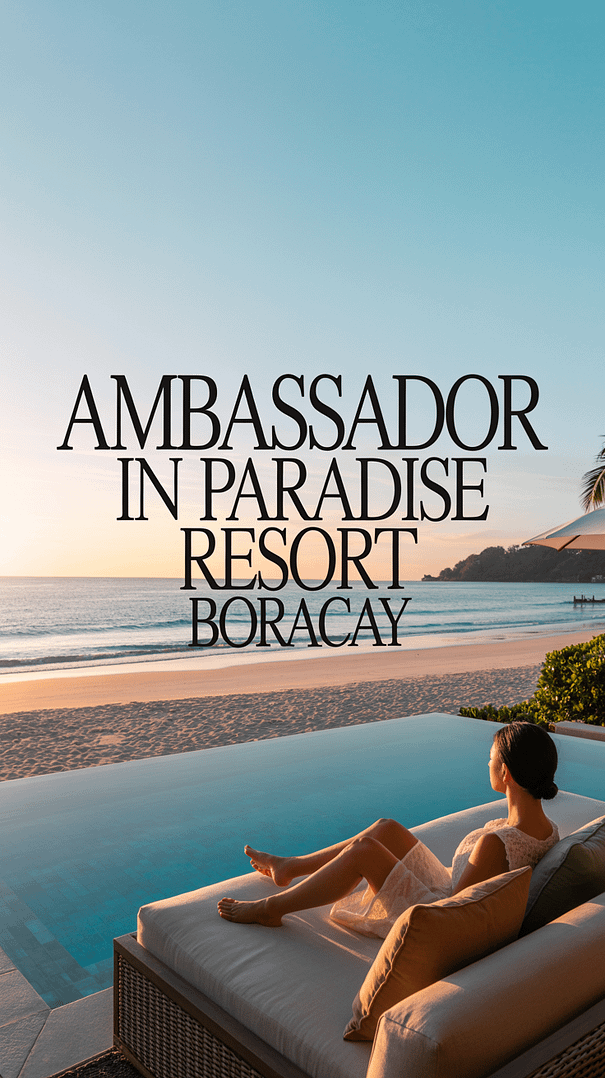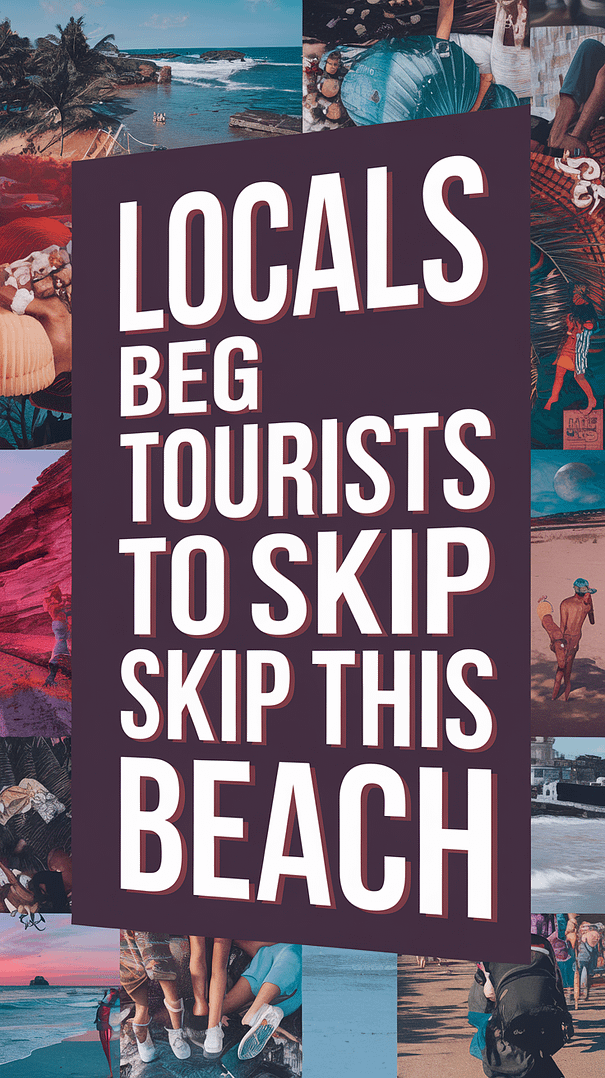The Real Story Behind Paradise
Boracay Island sits like a tiny white pearl in the vast blue expanse of the Aklan province, measuring just 10 kilometers long and 2 kilometers wide at its widest point.
This small slice of paradise packs more punch per square meter than almost anywhere else in the Philippines, and trust me, I’ve seen it transform from a quiet fishing village into one of Southeast Asia’s most celebrated beach destinations.
The island’s three main beaches each have distinct personalities. White Beach, the superstar of the trio, stretches 4 kilometers along the western coast with powder-fine sand that squeaks under your feet – locals call it “singing sand” because of the sound it makes when you walk on it.
Bulabog Beach on the eastern side serves as the island’s adrenaline headquarters, where kitesurfers and windsurfers dance with the trade winds. Puka Beach up north offers a more rugged beauty with its collection of puka shells and fewer crowds.
Getting There: The Island Hop Reality
Here’s something that catches first-time visitors off guard: you can’t fly directly to Boracay. The island has no airport, so your journey involves a bit of island-hopping choreography that’s become part of the Boracay experience.
| Route | Flight Destination | Ground Transport | Boat Ride | Total Time |
|---|---|---|---|---|
| Most Popular | Caticlan Airport (MPH) | Tricycle (5 mins) | 15 minutes | 30-45 minutes |
| Budget Option | Kalibo Airport (KLO) | Bus/Van (1.5-2 hours) | 15 minutes | 2.5-3 hours |
Pro tip from someone who’s made this journey countless times: book your Caticlan flight early, especially during peak season. The airport is tiny – think of it as a glorified bus terminal with a runway – and flights fill up faster than you can say “paraw sailing.”
Station Breakdown: Finding Your Tribe
White Beach divides into three stations, each with its own vibe and crowd. Think of them as different neighborhoods in beach paradise:
- Station 1: The sophisticated elder sibling where luxury resorts cluster around the narrowest but finest stretch of sand. Quieter, more expensive, perfect for romantic getaways and Instagram shots without photobombing strangers.
- Station 2: The bustling heart where D’Mall shopping center pumps life into the area 24/7. Expect crowds, street food, souvenir shops, and the energy of a beach carnival. This is where most first-time visitors gravitate.
- Station 3: The laid-back younger cousin offering budget accommodations and a more local feel. Great for backpackers and travelers who want to experience Boracay without breaking the bank.
Weather Wisdom: Timing Your Visit
Boracay operates on two seasons that locals live by religiously. The dry season brings calm seas perfect for swimming and those postcard-worthy sunset photos, while the wet season transforms the island into a wind-powered playground.
| Season | Months | Weather | Best For | Crowd Level |
|---|---|---|---|---|
| Dry Season | November – April | Calm seas, less wind | Swimming, sunbathing, sunset watching | High |
| Wet Season | May – October | Strong winds, occasional rain | Kitesurfing, windsurfing, budget travel | Low to Medium |
Here’s an insider secret: the “wet season” isn’t as scary as it sounds. Rain typically comes in short bursts, often in the late afternoon or evening, and the rest of the day can be absolutely gorgeous. Plus, you’ll get better deals and fewer crowds.
Island Quirks Only Locals Know
After decades of calling this island home, I’ve collected a treasure trove of Boracay quirks that guidebooks rarely mention:
- The sand is so fine it gets everywhere – and I mean everywhere. Locals carry baby powder to remove it from skin because regular toweling just spreads it around.
- Tricycles here are smaller than mainland versions because the island’s narrow roads can’t accommodate full-sized ones. First-time riders often feel like they’re in a clown car.
- The island’s power grid is surprisingly unreliable for such a tourist hotspot. Rolling blackouts still happen, especially during peak season when demand spikes.
- Fresh water is a precious commodity. The island imports most of its drinking water, which explains why bottled water costs more here than in Manila.
- Boracay has its own time zone – not officially, but locals operate on “island time” where everything moves a bit slower, and punctuality is more of a suggestion than a rule.
The Real Cost of Paradise
Money talks differently on Boracay. While you can technically visit on a shoestring budget, the island’s small size and tourist-focused economy mean prices inflate faster than pool floaties in the sun.
| Category | Budget Range | Mid-Range | Luxury |
|---|---|---|---|
| Accommodation (per night) | ₱800-2,000 | ₱2,500-8,000 | ₱10,000+ |
| Meals (per day) | ₱600-1,000 | ₱1,200-2,500 | ₱3,000+ |
| Activities (per day) | ₱500-1,500 | ₱2,000-4,000 | ₱5,000+ |
Smart spending tip: eat where locals eat. The small carinderias (local eateries) tucked away from the beachfront serve authentically delicious Filipino food at fraction of resort prices. My personal favorite is a tiny spot behind D’Mall that serves the best adobo on the island – look for the place with plastic chairs and the longest line of tricycle drivers.
Activities Beyond the Beach Selfie
Sure, lounging on white sand is fantastic, but Boracay offers experiences that go beyond the typical beach vacation checklist. Island hopping to nearby Crocodile Island reveals excellent snorkeling spots where parrotfish and angelfish put on underwater shows. Paraw sailing at sunset combines traditional Filipino outrigger sailing with one of the world’s most spectacular daily light shows.
For thrill-seekers, Bulabog Beach transforms into a wind sports mecca where international kitesurfing competitions happen regularly. The consistent trade winds and shallow waters create perfect conditions for both beginners and experts. Local instructors here are world-class – several have competed internationally and now share their skills with visitors.
The Challenges Nobody Talks About
Paradise comes with its own set of challenges, and Boracay doesn’t hide them well. The island’s popularity has created an infrastructure strain that affects everything from traffic flow to waste management. During peak season, the narrow beachfront path becomes a human traffic jam where walking from Station 1 to Station 3 can take three times longer than expected.
Water pressure in accommodations can be unpredictable, especially during busy periods. Many visitors discover this during their first shower when the water pressure resembles a gentle drizzle rather than a proper rinse. The island’s small size also means limited space for everyone, so beaches that look spacious in photos can feel crowded during peak hours.
Navigating Local Customs
Filipinos are naturally hospitable, but Boracay’s tourism industry has created some unique local customs worth understanding. Haggling is expected at souvenir stalls and with tricycle drivers, but restaurants and activity providers typically have fixed prices. A gentle smile and polite negotiation work better than aggressive bargaining.
Respect for the environment has become a major local concern. The island has strict rules about beach activities, smoking areas, and waste disposal. Locals appreciate visitors who follow these guidelines without being reminded – it shows you care about preserving what makes Boracay special.
Common Questions
Do I need to bring my own beach towels and umbrellas?
Most accommodations provide beach towels, but bringing a quick-dry travel towel gives you more flexibility. Beach umbrellas and chairs are available for rent directly on the sand, but securing a good spot during peak season requires early morning positioning or paying premium rates.
Are there ATMs on the island, and do they work reliably?
Several ATMs operate on Boracay, concentrated mainly around D’Mall and Station 2. However, they frequently run out of cash during peak season and holidays. Bring enough cash for your entire stay, plus extra for emergencies. Most establishments accept cash only, though some upscale restaurants and resorts accept cards.
What’s the deal with the island’s internet connectivity?
Internet speed varies dramatically depending on location and time of day. Expect slower connections than what you’re used to at home. Most accommodations offer Wi-Fi, but streaming videos or video calls can be frustrating. Consider this an opportunity to disconnect, or purchase a local SIM card with data for more reliable mobile internet.
Can I drink the tap water, and what about ice in drinks?
Stick to bottled water for drinking and brushing teeth. Most establishments use filtered water for ice, but when in doubt, ask. Stomach issues from water are the fastest way to ruin a Boracay vacation. Bottled water is widely available, though more expensive than mainland prices.
How do I avoid the tourist traps and find authentic experiences?
Venture beyond the beachfront strip, especially for meals and shopping. The island’s interior roads hide local markets, authentic eateries, and shops where prices haven’t been inflated for tourists. Ask tricycle drivers for recommendations – they know where locals actually eat and shop.
Final Thoughts: Why Boracay Endures
Despite its challenges and crowds, Boracay continues to captivate visitors for reasons that go beyond its undeniable physical beauty. The island possesses an infectious energy that comes from the collision of cultures, the warmth of its people, and the daily miracle of watching the sun set over one of the world’s most beautiful beaches. Every evening, as the sky transforms into a canvas of oranges and purples, locals and visitors alike pause their activities to witness this daily spectacle together. This shared moment of wonder, repeated every single day, reminds you why places like Boracay become more than just destinations – they become experiences that change how you see the world, one sunset at a time.
